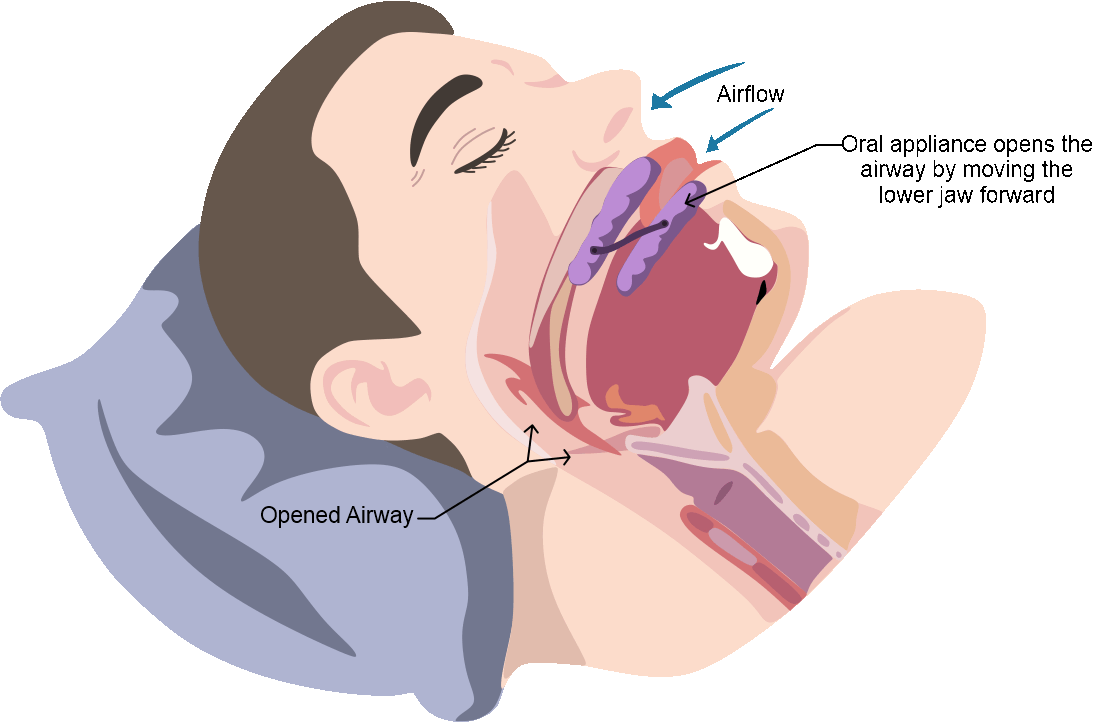Why Is Sleep Apnea a Growing Concern in Houston?
In the sprawling urban landscape of Houston, where everything seems to be larger than life, there's a hidden health concern silently affecting the lives of countless residents: sleep apnea. This article explores the alarming rise of sleep apnea in Houston, shedding light on the reasons behind its growth, its various forms, including complex sleep apnea, and the critical need for awareness and treatment.
Understanding Sleep Apnea
Sleep apnea is a potentially serious sleep disorder characterized by interrupted breathing during sleep. While there are different types of sleep apnea, the two most common are obstructive sleep apnea (OSA) and central sleep apnea (CSA). However, a third form, known as complex sleep apnea or treatment-emergent central sleep apnea, has been gaining attention due to its complexity and unique challenges.

The Sleep Apnea Spectrum in Houston
Houston, known for its vibrant culture, diverse population, and thriving industries, is also grappling with a growing sleep apnea problem. The factors contributing to this rise are multifaceted, encompassing lifestyle changes, obesity rates, urban development, and environmental factors.
- Obesity Epidemic: One of the primary drivers of sleep apnea is obesity. Houston, like many other major cities in the United States, has witnessed a surge in obesity rates. The excess weight can lead to the narrowing of airways, increasing the risk of obstructive sleep apnea.
- Urban Development: Rapid urbanization and increasing traffic congestion have resulted in longer commutes for Houstonians. This extended daily travel time can lead to irregular sleep patterns, creating an environment ripe for sleep disorders to flourish.
- Environmental Factors: Houston's climate, with its high humidity levels and allergen-rich environment, can exacerbate breathing problems during sleep. Allergies and respiratory issues can contribute to the development or worsening of sleep apnea.
Complex Sleep Apnea: A Unique Challenge
While obstructive sleep apnea is more common, complex sleep apnea presents a distinct set of challenges. This form, also referred to as treatment-emergent central sleep apnea, occurs when a patient with OSA develops CSA upon starting continuous positive airway pressure (CPAP) therapy. The exact causes of complex sleep apnea are not fully understood, but it highlights the need for individualized treatment plans and ongoing monitoring.
The Importance of Early Detection
Detecting sleep apnea in its early stages is crucial to prevent its progression and associated health risks. Common symptoms of sleep apnea include loud snoring, choking or gasping during sleep, excessive daytime fatigue, and difficulty concentrating. However, these symptoms often go unnoticed or are attributed to other factors, leading to delayed diagnosis.
The Role of Awareness and Education
Addressing the growing concern of sleep apnea Houston necessitates a comprehensive approach. First and foremost is the need for public awareness and education. Healthcare professionals, community leaders, and advocacy groups must work together to spread information about the risks, symptoms, and consequences of sleep apnea.

Treatment Options
Houston's medical community is well-equipped to tackle the rising incidence of sleep apnea. Various treatment options are available, ranging from lifestyle modifications to medical interventions.
- Lifestyle Changes: Weight management through diet and exercise can significantly reduce the severity of sleep apnea. Houston's access to fitness centers, parks, and outdoor activities provides ample opportunities for individuals to embark on a healthy lifestyle.
- CPAP Therapy: Continuous positive airway pressure (CPAP) devices are a common treatment for sleep apnea. Properly fitted CPAP masks help maintain an open airway during sleep, preventing apnea episodes.
- Oral Appliances: Dental appliances can be custom-made to reposition the jaw and tongue, keeping the airway open. They are often recommended for patients with mild to moderate sleep apnea.
- Surgery: In severe cases or when other treatments are ineffective, surgical options may be considered. Surgical interventions can include tissue removal to widen the airway, jaw repositioning, or implanting a nerve stimulator to control airway muscles.
Conclusion:
As the "Space City" of the United States, Houston has always been a place of innovation and progress. However, amidst the glittering skyline and bustling energy industry, a quieter, but equally significant, health concern is on the rise: sleep apnea. The factors contributing to this growth are complex, but the consequences are serious.
To combat the growing concern of sleep apnea in Houston, awareness, education, and early detection are key. By understanding the unique challenges posed by complex sleep apnea and embracing a variety of treatment options, Houstonians can take proactive steps to ensure better sleep, improved health, and a brighter future for their beloved city.
Comments
Post a Comment